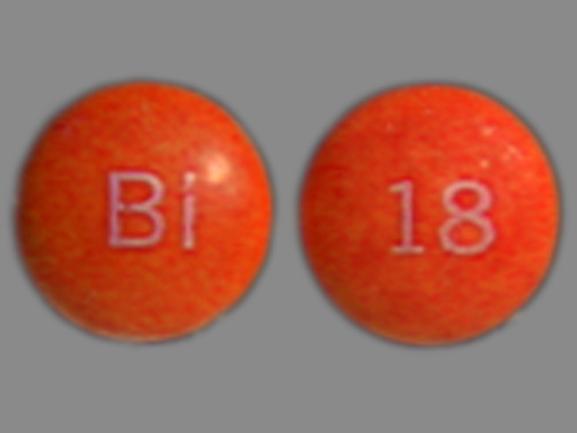Persantine Side Effects
Generic name: dipyridamole
Medically reviewed by Drugs.com. Last updated on Oct 18, 2024.
Note: This document provides detailed information about Persantine Side Effects associated with dipyridamole. Some dosage forms listed on this page may not apply specifically to the brand name Persantine.
Applies to dipyridamole: solution, tablet.
Common side effects of Persantine
Some side effects of dipyridamole may occur that usually do not need medical attention. These side effects may go away during treatment as your body adjusts to the medicine. Also, your health care professional may be able to tell you about ways to prevent or reduce some of these side effects.
Check with your health care professional if any of the following side effects continue or are bothersome or if you have any questions about them:
More common side effects
- abdominal or stomach cramps
- diarrhea
- dizziness or lightheadedness
Less common side effects
- flushing
- headache
- nausea or vomiting
- weakness
Rare side effects
- general discomfort and/or unusual tiredness or weakness
- hair loss
- joint pain or swelling
- muscle pain
- runny nose
- sneezing
Serious side effects of Persantine
Along with its needed effects, dipyridamole (the active ingredient contained in Persantine) may cause some unwanted effects. Although not all of these side effects may occur, if they do occur they may need medical attention.
Check with your doctor as soon as possible if any of the following side effects occur while taking dipyridamole:
Rare side effects
- chest pain
- gallstones
- tightness or swelling of neck
- yellow eyes or skin
For healthcare professionals
Applies to dipyridamole: compounding powder, intravenous solution, oral tablet.
General adverse events
The most frequent adverse reactions were chest pain/angina pectoris, electrocardiographic changes (mostly ST-T changes), headache, and dizziness.[Ref]
Cardiovascular
- Very common (10% or more): Chest pain/angina pectoris (19.7%), electrocardiographic changes (15.9%)
- Common (1% to 10%): Electrocardiographic abnormalities/ST-T changes, electrocardiographic abnormalities/extrasystoles, hypotension, flushing, electrocardiographic abnormalities/tachycardia, blood pressure lability, hypertension, angina pectoris, bleeding
- Uncommon (0.1% to 1%): Myocardial infarction, electrocardiographic abnormalities unspecified, arrhythmia unspecified, palpitation, ventricular tachycardia, bradycardia, atrioventricular block, orthostatic hypotension, atrial fibrillation, supraventricular tachycardia
- Rare (0.01% to 0.1%): Fatal myocardial infarction, nonfatal myocardial infarction, ventricular arrhythmia unspecified, heart block unspecified, cardiomyopathy, intermittent claudication
- Very rare (less than 0.01%): Asystole, sustained ventricular tachycardia or ventricular fibrillation
- Frequency not reported: Bleeding during or after surgery, cardiac death, ventricular fibrillation, symptomatic ventricular tachycardia, sinus node arrest, sinus node depression, conduction block, tachycardia, post procedural hemorrhage, operative hemorrhage, cardiac arrest, sinus arrest
- Postmarketing reports: Palpitation[Ref]
Respiratory
- Common (1% to 10%): Dyspnea
- Uncommon (0.1% to 1%): Severe bronchospasm, pharyngitis, bronchospasm, hyperventilation, rhinitis
- Rare (0.01% to 0.1%): Dysphonia, coughing, pleural pain
- Very rare (less than 0.01%): Pulmonary edema
- Frequency not reported: Laryngospasm
- Postmarketing reports: Larynx edema[Ref]
Nervous system
- Very common (10% or more): Headache (up to 37.2%), dizziness (up to 30.1%)
- Common (1% to 10%): Paresthesia
- Uncommon (0.1% to 1%): Hypoesthesia, hypertonia, tremor, tinnitus, dysgeusia
- Rare (less than 0.1%): Abnormal coordination, somnolence, migraine, vertigo, transient ischemic attack
- Frequency not reported: Stroke, transient cerebral ischemia, seizures, cerebrovascular accident, syncope, cerebral seizure/grand mal seizure[Ref]
Gastrointestinal
- Very common (10% or more): Dyspepsia (up to 16.6%), diarrhea (up to 15.4%), nausea (up to 14.8%), gastric pain (up to 14.5%)
- Common (1% to 10%): Abdominal distress, vomiting
- Uncommon (0.1% to 1%): Dry mouth, abdominal pain, flatulence, eructation
- Rare (less than 0.1%): Dysphagia, tenesmus
- Frequency not reported: Gastroduodenal ulcer[Ref]
Other
- Common (1% to 10%): Pain unspecified, fatigue
- Uncommon (0.1% to 1%): Asthenia, malaise, earache
- Rare (less than 0.1%): Death, any complication[Ref]
Musculoskeletal
- Common (1% to 10%): Myalgia
- Uncommon (0.1% to 1%): Back pain, arthralgia, rigor
- Rare (less than 0.1%): Leg cramping
- Postmarketing reports: Arthritis[Ref]
Dermatologic
- Common (1% to 10%): Rash
- Uncommon (0.1% to 1%): Diaphoresis
- Frequency not reported: Pruritus, urticaria
- Postmarketing reports: Alopecia[Ref]
Immunologic
- Uncommon (0.1% to 1%): Hypersensitivity reaction
- Frequency not reported: Anaphylactoid reaction, angioedema
- Postmarketing reports: Allergic reaction, urticaria, pruritus, dermatitis, rash[Ref]
Psychiatric
- Uncommon (0.1% to 1%): Nervousness/anxiety
- Rare (less than 0.1%): Depersonalization[Ref]
Ocular
- Uncommon (0.1% to 1%): Vision abnormalities unspecified
- Rare (less than 0.1%): Eye pain[Ref]
Local
- Uncommon (0.1% to 1%): Injection site reaction unspecified, injection site pain[Ref]
Metabolic
- Rare (less than 0.1%): Edema, appetite increased, thirst[Ref]
Endocrine
- Rare (less than 0.1%): Breast pain[Ref]
Genitourinary
- Rare (less than 0.1%): Perineal pain[Ref]
Renal
- Rare (less than 0.1%): Renal pain[Ref]
Hematologic
- Frequency not reported: Thrombocytopenia, anemia[Ref]
Hepatic
- Frequency not reported: Liver dysfunction
- Postmarketing reports: Hepatitis, cholelithiasis[Ref]
Hypersensitivity
- Postmarketing reports: Rash, urticaria, severe bronchospasm, angioedema[Ref]
References
1. (2002) "Product Information. Persantine (dipyridamole)." Boehringer-Ingelheim
2. Cerner Multum, Inc. "UK Summary of Product Characteristics."
3. Cerner Multum, Inc. "Australian Product Information."
More about Persantine (dipyridamole)
- Check interactions
- Compare alternatives
- Drug images
- Dosage information
- During pregnancy
- Drug class: cardiac stressing agents
- Breastfeeding
Patient resources
Professional resources
Related treatment guides
Further information
Persantine side effects can vary depending on the individual. Always consult your healthcare provider to ensure the information displayed on this page applies to your personal circumstances.
Note: Medication side effects may be underreported. If you are experiencing side effects that are not listed, submit a report to the FDA by following this guide.

